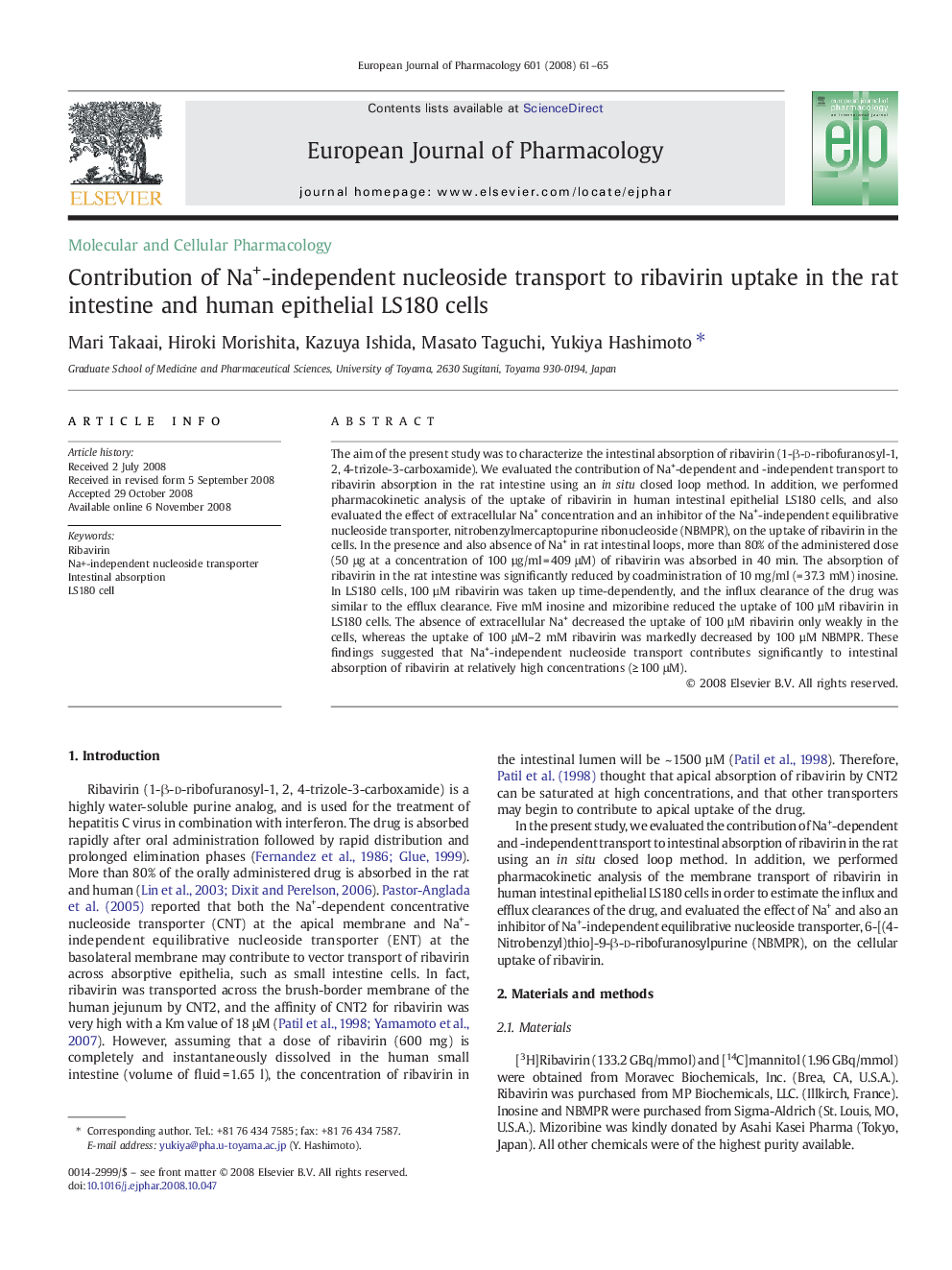| Article ID | Journal | Published Year | Pages | File Type |
|---|---|---|---|---|
| 2534690 | European Journal of Pharmacology | 2008 | 5 Pages |
The aim of the present study was to characterize the intestinal absorption of ribavirin (1-β-d-ribofuranosyl-1, 2, 4-trizole-3-carboxamide). We evaluated the contribution of Na+-dependent and -independent transport to ribavirin absorption in the rat intestine using an in situ closed loop method. In addition, we performed pharmacokinetic analysis of the uptake of ribavirin in human intestinal epithelial LS180 cells, and also evaluated the effect of extracellular Na+ concentration and an inhibitor of the Na+-independent equilibrative nucleoside transporter, nitrobenzylmercaptopurine ribonucleoside (NBMPR), on the uptake of ribavirin in the cells. In the presence and also absence of Na+ in rat intestinal loops, more than 80% of the administered dose (50 μg at a concentration of 100 µg/ml = 409 μM) of ribavirin was absorbed in 40 min. The absorption of ribavirin in the rat intestine was significantly reduced by coadministration of 10 mg/ml (= 37.3 mM) inosine. In LS180 cells, 100 µM ribavirin was taken up time-dependently, and the influx clearance of the drug was similar to the efflux clearance. Five mM inosine and mizoribine reduced the uptake of 100 µM ribavirin in LS180 cells. The absence of extracellular Na+ decreased the uptake of 100 µM ribavirin only weakly in the cells, whereas the uptake of 100 μM–2 mM ribavirin was markedly decreased by 100 µM NBMPR. These findings suggested that Na+-independent nucleoside transport contributes significantly to intestinal absorption of ribavirin at relatively high concentrations (≥ 100 μM).
